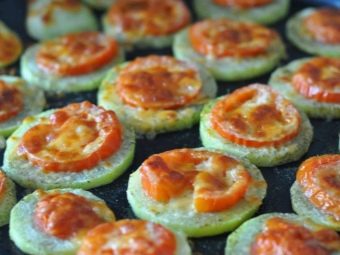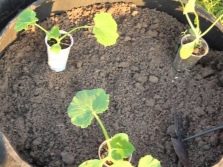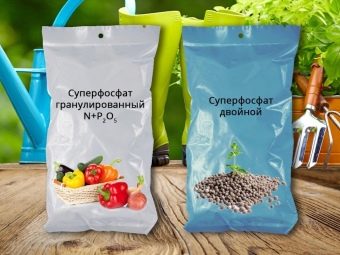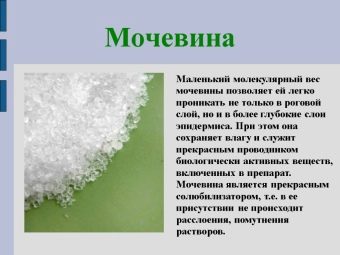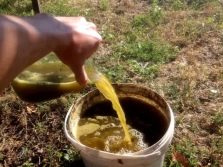How to feed zucchini and how to do it right?
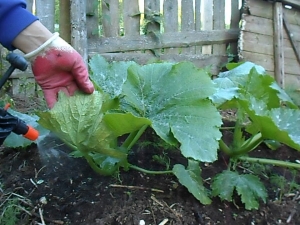
Squashes are a culture known to many.But not everyone knows the benefits of this fruit, which can be eaten. Some grow the plant only to feed the animals in their household.
How to apply fertilizer?
Experts note that in zucchini there are many substances that are useful for the body, antioxidants and vitamins. These fruits are low in calories, which allows them to be eaten by everyone who wants to lose weight. Plants contain fiber, which has a good effect on the digestive system. And also this product can be used at any age without restrictions. In order to collect a good harvest of eco-friendly product in your garden, you must first properly plant it, as well as take care of it.
The yield of pumpkin crops depends on how care will be taken for planting material. In order to get enough good fruits, it is necessary not only to cultivate and properly sow the plot, but also to observe the time of sowing and the time of harvest. Top dressing of fruits at the same time plays no less important role than regular watering. The best fruits can be obtained in those areas that are well fertilized and constantly receive the required nutrition. These vegetables grow on the open ground, so they need constant feeding, which will help to set fruit.
Soil fertilizer needs to be made several times during the whole growth and development of the vegetable.
Top dressing is made in order to increase the yield from the site. With proper implementation of all activities, it is possible to increase the yield up to 80 percent. As well as fertilizing allows you to increase the amount of nutrients and vitamins in the product. Vegetable well takes any help in the form of fertilizing, which should be carried out with irrigation. In the open area after planting zucchini in June, it is necessary to give fertilizer to the plant several times.
The first dose of fertilizer is applied during planting, the second time it is necessary to carry out the treatment at the time when the plants begin to bloom. As well as the third time, it is recommended to additionally feed when the fruits appear on the vines.
During flowering
At this time, it is desirable to attract insects to the site, which can pollinate flowers. Therefore, it is recommended to conduct foliar feeding with the help of a sweet mixture. For its preparation takes a teaspoon of sugar and diluted in a glass of water. The resulting composition is sprayed on the bushes, it will attract insects that can pollinate flowers. This procedure does not take much time and does not take forces, but at the same time helps to improve the amount of the ovary. In this case, the bush will be formed correctly, which will improve the ventilation of the soil and give access to useful substances to the fruit.
During the fruiting period
When the fruits begin to form, you should not miss this moment and give the plants enough nutrients so that they do not wilt and gain strength. Therefore, at this time apply superphosphate and urea for spraying. The solution is applied to the soil in liquid form, and also mixed with the soil when loosening the soil. In the latter case, be sure to water the area. If there is no desire or ability to independently prepare organic fertilizers, you can use ready-made mixtures that are sold in stores.
In any case, it must be remembered that for squash in the open field, proper and sufficient feeding is important, since if it is not available, various fungal and other diseases can appear on the plant. Therefore, to abandon fertilizer is not worth it. Such a plant will be at risk. Experienced specialists, in addition to basic dressings, also make additional ones. They are usually carried out on the tenth day after the first fruits appear and are carried out once every 2 days.
Effective means
If the plant is fed on time and in sufficient quantity, it will help in harvesting to get vegetables that are rich in wholesome elements and are distinguished by good taste. In this case, it will be possible to harvest within 40 days after its disembarkation. The main thing - it is correct to produce dressing at the time of ripening and flowering plants. But not many people know how to feed squash at this time.
Experts note that fertilizing can be done with iodine, ash or yeast, as well as other drugs. All of these tools are natural, so they do not harm and help grow an eco-friendly product.
Folk
Those who are worried about their health, usually prefer folk remedies for feeding plants in open ground. Folk remedies are an alternative to mineral fertilizers, which by their effectiveness are not inferior, but at the same time contain less chemical components that negatively affect not only the health of the person who consumes such a product, but also the plant.
Often experienced gardeners use ash as a natural fertilizer, which contains elements necessary for squash in the composition. It is important that the ash does not contain nitrogen, so it will need to be added separately. Moreover, if a lot of manure was introduced into the soil in the fall, then this soil will contain nitrogen. Its amount is enough to help develop zucchini. Therefore, ash can be used as the only fertilizer for such a culture in this period.
It must be remembered that a concentrated solution of ash replaces other chemicals that are used to deoxidize the soil. Ash can reduce acidity in a short time without harming the product or the soil. Ash is effectively used in dry form or diluted with water. It is necessary to make it on the ground, and scatter or spray on the plants. It is important to choose the ash, which remained only from the burning of firewood. Do not use ash from foams, roofing felt and other materials of artificial origin.
All types of dressings give components useful to the plant. Among them are yeasts. Squashes will respond to this feeding with improved root growth and large fruits. When yeast is introduced, they cause an accelerated development of microelements and bacteria that are in the soil and are involved in the processing of humus. The process releases nitrogen, which is important for zucchini.
Yeast can be applied in various ways. Sometimes they are used as a dry product that is sprinkled on the soil, or in the form of a solution with water. They can spray both the bushes themselves and the soil.
It should be remembered that the yeast develops in the heat, so it is better to produce top dressing with their help in hot weather. In cold weather, yeast will be less beneficial.
Professional
Today, there are a lot of chemical products on sale that can be used as dressing for courgettes. If there is no desire or ability to apply organic matter to feed soil and plants, you can prepare chemicals. They are enough to properly dilute in water and spray the bushes. It is necessary to carry out procedures only at the time indicated on the package. All these points must be respected so as not to harm the plants. Among these drugs can be noted nitrophoska, which is diluted in one-to-one ratio with water and poured on plants. Zucchini well absorb such a mixture and develop.
However, you can additionally sprinkle the soil near the bushes with peat or chicken droppings. Another means for feeding zucchini is carbamide. To do this, you must dilute 5 grams of the substance in a bucket of water and spray it on the area. For feeding zucchini in the period of the appearance of the fruit you need to use "Effecton". It is diluted in water in a ratio of 1: 2 and is brought under the root of the plant in order not to fall on the leaves.Superphosphate and boric acid will help to enrich the soil and zucchini with minerals. They are also brought under the plant root.
How to fertilize?
Feeding zucchini in the open ground is made according to certain rules. They are pretty simple, so everyone can do them. In order to properly fertilize the soil, you must adhere to the following tips from experts in this direction:
- when the formation of the fetus occurs, the plant can get sick or wither from lack of strength, so the use of fertilizer preparations is important;
- they can be applied in the form of solutions, followed by loosening the soil or sprinkling, and then also digging up and loosening, while it should be borne in mind that a large amount of fertilizer can negatively affect plants;
- some drugs should be made only under the root in a small concentration; To do this, take 10 liters of water to dissolve 10 or 15 grams of chemicals;
- for foliar application, Bud, Dew and other means are used;
- if the weather is good and it is not hot outside, then you can make preparations in an amount of not more than 10 liters per square meter, regardless of how many bushes are planted there;
- the best time for watering a zucchini is morning or evening;
- during the day, when the plants are still small, they can be covered with wet matter or freshly cut grass, which will help the moisture to remain in the soil and not evaporate, as well as prevent the leaves from drying out from the heat;
- It is important to use only freshly prepared solutions, and also to treat the plant with them no more than twice the entire season.
Recommendations
In order to ensure a sufficient number of trace elements in the soil, in addition to the main dressings, which are produced twice throughout the season using chemical or organic fertilizers, it is recommended to additionally produce one more dressing. It is done during the fruiting period when the plants most need growth stimulants. To do this, you can use the drug "Energen" or "Effecton." They dissolve in the amount of 20 grams per 10 liters of water and poured on a bush. After this procedure, the first zucchini will appear in 2-3 weeks and will be distinguished by good taste and beautiful appearance.
If you do not follow the rules, zucchini can rot in the garden, which happens for several reasons.
- Too wet soil. In this case, it is necessary to reduce watering so that water can evaporate from the soil in a natural way or be absorbed into it. In some cases, it is recommended to mulch the soil.
- Failure of crop rotation. It is not recommended to plant this crop in one place for several years in a row, which will cause depletion of the soil and reduce the amount of nutrients in it. Also in the soil can develop pathogens of various diseases. It is important to change the landing site of this crop, after fertilizing the part of the vegetable garden where the zucchini had previously been planted. The area where the zucchini season grew during the season should not be used for re-disembarking the following year. This site should be fertilized and prepared for planting legumes, eggplant, carrots and cucumbers. All these vegetables grow well in the areas after squash and do not require special care. It is recommended to sprinkle the soil for the winter with peat or humus to better feed the bushes, then dig the bed to a depth of 20 cm.
- Pests. If plants get sick, then this can be determined by their appearance. White scurf appears on the leaves, which then turns into spots. After that, pale plants begin to turn yellow and rot.
Therefore, it is recommended during this period to process pumpkins with chemical preparations, for example, Fitosporin.
If you follow all these rules, as well as time to eliminate diseases and feed the soil, you can get a pretty good harvest and do not put a lot of effort into it.As can be seen, growing zucchini and feeding them does not require special skills and abilities, therefore everyone can handle such work.
With proper care from one bush can collect up to 40 fruits. It is recommended to collect them young, as they have at this time a lot of nutrients and different taste. Such fruits do not require cleaning before cooking, and they can also be used for preservation.
For information on when feed zucchini, see the video below.

